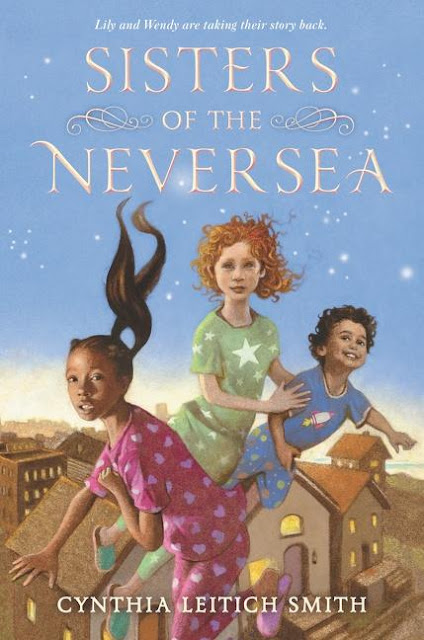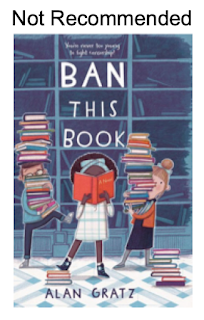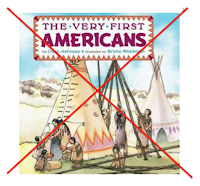- Home
- About AICL
- Contact
- Search
- Best Books
- Native Nonfiction
- Historical Fiction
- Subscribe
- "Not Recommended" books
- Who links to AICL?
- Are we "people of color"?
- Beta Readers
- Timeline: Foul Among the Good
- Photo Gallery: Native Writers & Illustrators
- Problematic Phrases
- Mexican American Studies
- Lecture/Workshop Fees
- Revised and Withdrawn
- Books that Reference Racist Classics
- The Red X on Book Covers
- Tips for Teachers: Developing Instructional Materials about American Indians
- Native? Or, not? A Resource List
- Resources: Boarding and Residential Schools
- Milestones: Indigenous Peoples in Children's Literature
- Banning of Native Voices/Books
- Debbie on Social Media
- 2024 American Indian Literature Award Medal Acceptance Speeches
- Native Removals in 2025 by US Government
Friday, October 29, 2021
Highly Recommended! A Girl Called Echo, Volume 4: Road Allowance Era
Monday, October 25, 2021
Highly Recommended: SISTERS OF THE NEVERSEA by Cynthia Leitich Smith; cover art by Floyd Cooper
Today AICL is pleased to give a Short and Sweet Rec* to Cynthia Leitich Smith’s Sisters of the Neversea. We recommend you get it for your children, your classroom, or your library. Here’s the description:
Lily and Wendy have been best friends since they became stepsisters. But with their feuding parents planning to spend the summer apart, what will become of their family—and their friendship?
Little do they know that a mysterious boy has been watching them from the oak tree outside their window. A boy who intends to take them away from home for good, to an island of wild animals, Merfolk, Fairies, and kidnapped children, to a sea of merfolk, pirates, and a giant crocodile.
A boy who calls himself Peter Pan.
Four reasons why AICL recommends Sisters of the Neversea
First, the author is Native. Cynthia Leitich Smith is a citizen of the Muscogee Nation, telling us a story where the primary character is Muscogee Creek.
Second, Sisters of the Neversea shows readers who Native people are, for real. J.M. Barrie’s stories about Peter Pan have mis-informed generations of readers. His stories encourage others to play Indian in stereotypical ways, and the characters in his story that are meant to be Native (Tiger Lily) are straight-up stereotypes. We are nothing like the “Indians” in his stories. Smith’s take on Peter Pan pushes back on those stereotypes.
Third, Sisters of the Neversea includes Black Indians. Upon seeing Floyd Cooper's cover art, Smith writes that she thought "There you are!" With his art, she saw Lily as Black Muscogee. Later in the book, we meet Strings, a Black Seneca Indian from the Bronx.
Fourth, Smith's author’s note includes several questions that she poses about the Native people in Barrie’s stories. “How did they get there?” she asks, and “Why were they described in hurtful language?” are two of them. Teachers who use the book in the classroom can draw attention to those questions and encourage students to ask similar questions about Native characters in other books they read.
We hope you’ll get a copy ASAP, read it, and tell others to read it, too. When you’re at your local library, ask for it! If they don’t have it yet, ask them to order it.
-----
*A Short and Sweet Rec is not an in-depth analysis. It is our strategy to tell you that we recommend a book we have read. We will definitely refer to it in book chapters and articles we write, and in presentations we do. Our Short and Sweet Recs include four reasons why we recommend the book.
Thursday, October 07, 2021
NOT RECOMMENDED: Alan Gratz's BAN THIS BOOK
I've come to Dr. Reese's review of Indian Captive because of its appearance in Alan Gratz's 2017 novel Ban this Book. Gratz's story is about a schoolgirl standing up against book-banning in her grade-school library. At one point the avid young reader is suspended and grounded with nothing to read except Indian Captive. There is no commentary about the merits of the book, but it is mentioned several times, giving it a prominence above many of the books named in the story -- enough to send me to investigate. I can see no particular reason why this book was chosen for its role in the story (unless it's a very subtle indication that some books are not as good as others -- but it's quite a stretch to find that interpretation), other than mere carelessness by the author, indifference to the reasons a book may be offensive, or lack of awareness of the harm that books can perpetuate -- a naive belief in the magical goodness of every written word. It seems odd considering the theme of the story. Also odd given another theme of the story: good intentions that lead to bad consequences. As adults, we can understand the complexity of the real world, and the value of ambiguity in literature, but seeing that the issues raised by this one book's inclusion is not developed at all, and this in a novel for children, I can only see it as a flaw in an otherwise worthwhile book.
In Ban This Book by Alan Gratz, a fourth grader fights back when From the Mixed-Up Files of Mrs. Basil E. Frankweiler by E. L. Konigsburg is challenged by a well-meaning parent and taken off the shelves of her school library. Amy Anne is shy and soft-spoken, but don’t mess with her when it comes to her favorite book in the whole world. Amy Anne and her lieutenants wage a battle for the books that will make you laugh and pump your fists as they start a secret banned books locker library, make up ridiculous reasons to ban every single book in the library to make a point, and take a stand against censorship.
I like a lot of other books too, especially Island of the Blue Dolphins, Hatchet, My Side of the Mountain, Hattie Big Sky, The Sign of the Beaver, and Julie of the Wolves. Basically any story where the main character gets to live alone. Indian Captive is pretty great too, even though Mary Jemison has to live in an Indian village. But I would rather live with Indian kidnappers than live with my two stupid younger sisters.
"But what do I say? There's nothing bad about Little House on the Prairie."
She was right. But no--that was true about all the books. I had to think like Mrs. Spencer.
"They get malaria in that one," I said. "That's scary, right? And the settlers think it's because they ate bad watermelon! But that's not how you get malaria. That's deliberately misleading. That could make a kid think you get malaria from watermelons!"
Friday, September 17, 2021
Highly Recommended! THE DINE READER: AN ANTHOLOGY OF NAVAJO LITERATURE
"When I paint people reading, it's also beyond what the picture is, it keeps going on. It's an interpretation of an interpretation of a reader."
Wednesday, September 15, 2021
Books by Native writers are on list of banned books at Central York High School in Pennsylvania
- Fry Bread: A Native American Story by Kevin Maillard, illustrated by Juana Martinez-Neal
- The People Shall Continue by Simon Ortiz, illustrated by Sharol Graves
- An Indigenous Peoples' History of the United States, by Roxanne Dunbar-Ortiz (note: because it is listed in the 4th-6th grade section, I think this is the young peoples adaption that Jean Mendoza and I did. Dunbar-Ortiz and Mendoza are not Native, but I am.).
- Indian No More by Charlene Willing McManis
- We Are Grateful by Traci Sorell (Sorell's book is a picture book. Perhaps the committee felt it should be used at the 4-6th grade level. I'm among those who recommend picture books for all readers.)
Monday, September 06, 2021
Highly Recommended! SHARICE'S BIG VOICE: A NATIVE KID BECOMES A CONGRESSWOMAN
Indigenous sovereignty is an essential component of civics education.
Elementary social studies curriculum is notoriously silent about Indigenous sovereignty.
Saturday, September 04, 2021
What a Difference Thirty Years of Hard Work Makes
1990Crow and Weasel by Barry Holstun LopezThe Legend of Jimmy Spoon by Kristiana GregoryBrother Moose by Betty LevinSing for a Gentle Rain by J. Alison JamesGhost Cave by Barbara A. SteinerSalcott, the Indian Boy by Melinda EldridgeBig Thunder Magic by Craig StreteThe Light in the Forest by Conrad RichterNessa's Fish by Nancy LuennLittle Firefly: An Algonquian Legend by Terri Cohlene2020The Only Good Indians: A Novel by Stephen Graham JonesWe Are Water Protectors by Carole LindstromThe Brave by James BirdThe Barren Grounds by David RobertsonCall Me Floy by Joanna CookeThe Train by Jodie CallaghanThe Range Eternal by Louise ErdrichSwift Fox All Along by Rebecca ThomasMolly of Denali: Berry Itchy Day by WGBH Educational FoundationThe Year of Miss Agnes by Kirkpatrick Hill
It can be difficult to push back, but I think this brief comparison tells us a lot. It makes a difference.
Tuesday, August 24, 2021
Not Recommended: WE ARE A GARDEN: A STORY OF HOW DIVERSITY TOOK ROOT IN AMERICA
The wind blows in newcomers from all directions. "They" become "we," and we become a garden.
This is, unfortunately, a problem I see a lot. There are children's books with "First Americans" in their title/subtitle. As my red X on this book indicates, that is not ok! Native peoples had names for our respective nations (yes, we were nations before the U.S. was a nation) that pre-date "the United States of America." That fact should be common knowledge. Calling individuals "American" is also a problem. President Obama did that in Of Thee I Sing: A Letter to My Daughters when he called Sitting Bull one of thirteen "groundbreaking Americans."
All Americans are migrants, the descendants of recent migrants, or the descendants of ancient migrants.
Long ago a strong wind blew. It blew people, like seeds, to a new land.
It blew in a girl and her clan when glaciers still covered the north and herds of mammoths still wandered the frozen tundra. They walked across a wide plain and became the first people to live on the sprawling continent.
Scientists are still investigating the details of when, how, and why we first came to the Americas.
Many American Indians today accept this migration story, but others do not because it conflicts with their traditional origin stories.
Misrepresenting the process of European colonization of North America, making everyone an immigrant, serves to preserve the "official story" of a mostly benign and benevolent USA, and to mask the fact that the pre-US Independence settlers were settlers, colonial settlers, just as they were in Africa and India, or the Spanish in Central and South America.
Wednesday, July 21, 2021
Milestones: Indigenous Peoples and Children's Literature
Summer Water and Shirley by Durango Mendoza, Muscogee, takes the Mahan Short Fiction Award at University of Missouri, Columbia. It is the first work by a Native writer to win this award. Mendoza's story has appeared in anthologies used with high school students.
"The books we select represent the very best for our kids and our communities. We believe that writers are members of our communities who we can look to as role models for our youth. We cannot, therefore, recommend Mr. Alexie's books, and we have decided to rescind our 2008 Best YA Book Award for The Absolutely True Diary of a Part-Time Indian. In rescinding this award, we hope to send an unequivocal message that Alexie's actions are unacceptable."


























